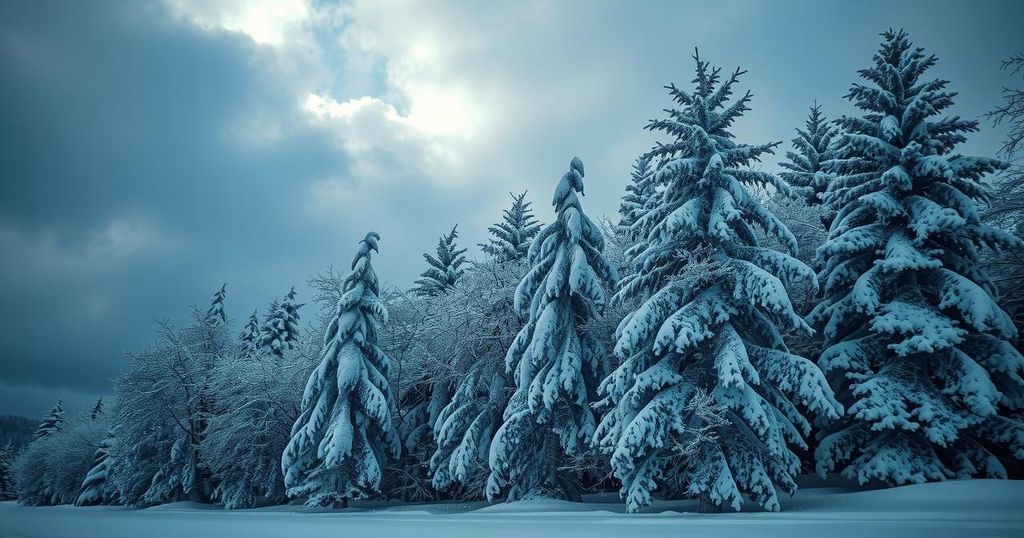Celebrity
ACCUWEATHER, ASIA, ATMOSPHERIC AND ENVIRONMENTAL RESEARCH, COHEN, ENTERTAINMENT, EUROPE/ASIA, FANTASY, JAPAN, JUDAH COHEN, LIFESTYLE, NORTHEAST, PASTELOK, PAUL PASTELOK, PERFORMANCE, REVIEW, RUSSIA, SCIENCE, SCOTT KLEEBAUER, SIBERIA, TENNESSEE VALLEY, USA, USA TODAY, WEATHER PREDICTION CENTER
Fatima Khan
0 Comments
Understanding the Ongoing Cold Snap: Origins and Outlook for Winter Weather
A severe cold spell is affecting the eastern U.S., potentially worsening midweek. The cold air comes from Siberia, linked to the polar vortex’s current state. Prospects for a white Christmas exist, but future cold patterns remain uncertain, with forecasts suggesting a milder overall winter. Western states may experience warmer conditions throughout December.
A severe cold snap is currently affecting a large portion of the eastern United States and is anticipated to worsen by midweek. Meteorologists, such as AccuWeather’s Paul Pastelok, indicate that a potent cold air mass will spread from the upper Midwest to the Southeast. This extreme chill has been notably severe for early December, a period characterized by milder winters in past years.
The origins of this cold air can be traced back to Siberia, as confirmed by experts like Judah Cohen from Atmospheric and Environmental Research. They explain how the cross-polar flow transports cold air from Siberia across the Arctic, leading to frigid temperatures reaching the United States. Additionally, Scott Kleebauer from the Weather Prediction Center notes that cold outbreaks in the U.S. typically involve air masses directly from Siberia, underscoring the significance of this event.
There is speculation regarding the polar vortex’s role in this cold wave. Expert Judah Cohen relates its current elongated state to the development of a cross-polar flow, influencing both high and low atmospheric levels, thereby impacting regional weather patterns. Some hope remains for a white Christmas, with Cohen suggesting that the second half of December may introduce milder temperatures before potentially colder and snowier weather returns as the holiday approaches.
Uncertainty persists about whether this Arctic blast will shape the rest of the winter. Cohen expresses that it is possible for such patterns to recur throughout winter, reminiscent of the harsh winter of 2013-2014. However, he cautions that typically, the polar vortex either strengthens after such events, leading to milder conditions, or engenders further disruptions later in winter.
The Climate Prediction Center’s latest forecast suggests that, despite current cold conditions, the eastern and southern U.S. will likely experience a milder-than-average winter. Conversely, regions in the western United States might remain warmer than average, primarily due to the persistent jet stream patterns affecting temperature distributions across the nation.
The article discusses the ongoing extreme cold snap affecting the eastern United States, elucidating its origins, atmospheric implications, and potential future weather patterns. It highlights contributions from meteorological experts who analyze the cold air’s arrival from Siberia, the role of the polar vortex, and the prospects for weather variability throughout the winter months. The article aims to inform readers about the current weather events and how they may impact future climatic conditions, particularly around the holiday season.
In summary, the current cold snap affecting much of the eastern U.S. is a significant meteorological event characterized by frigid air originating from Siberia. While there is some optimism regarding winter weather patterns, including the possibility of a white Christmas, the broader winter outlook remains uncertain, with forecasters indicating potential shifts towards milder conditions or further cold outbreaks in the coming months. It is crucial for residents to stay informed as conditions evolve.
Original Source: www.usatoday.com




Post Comment